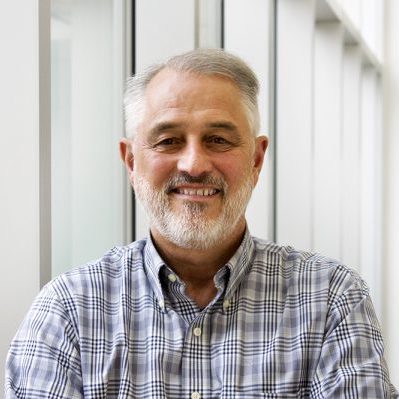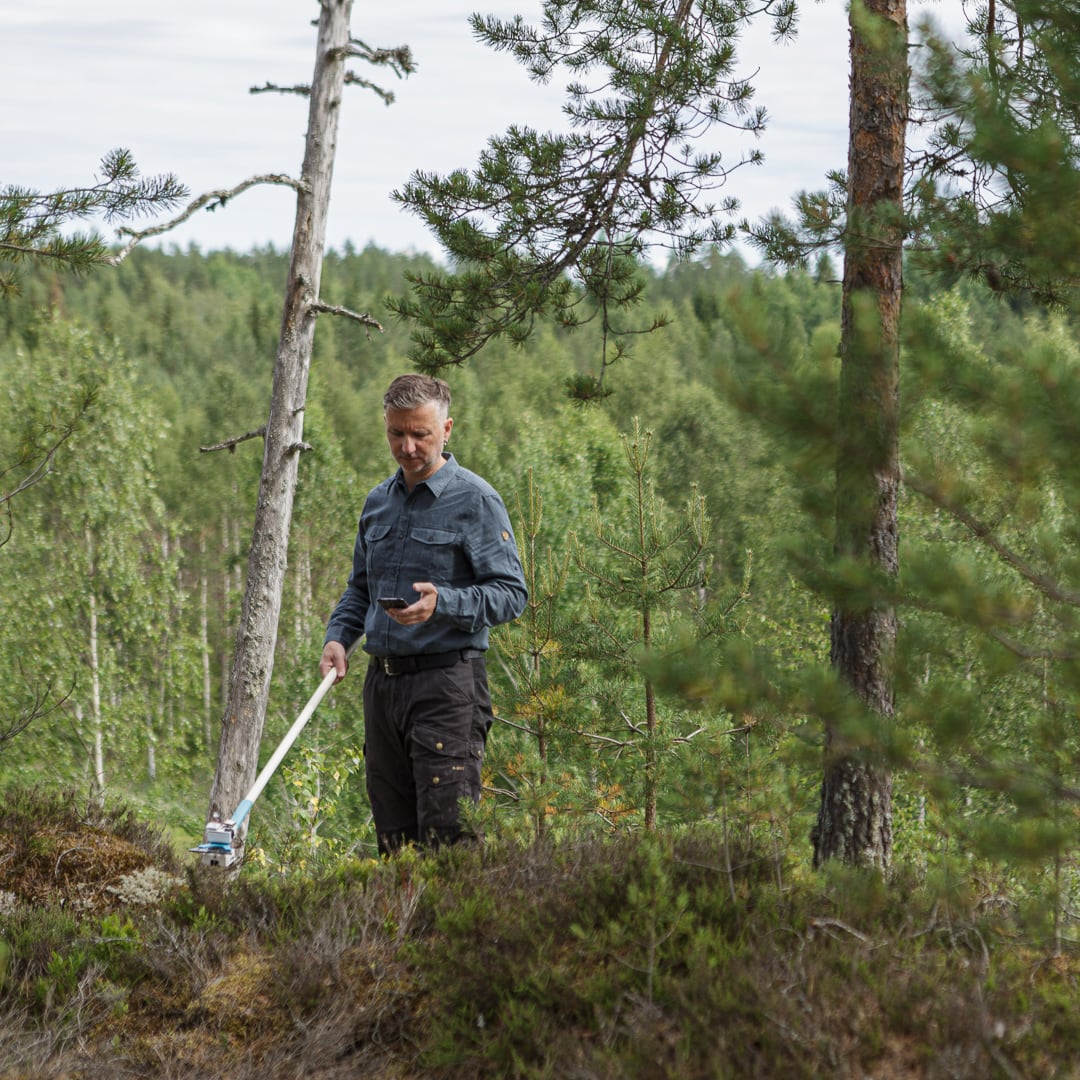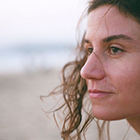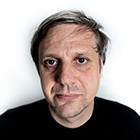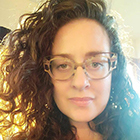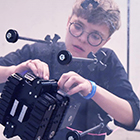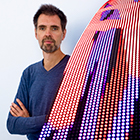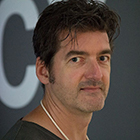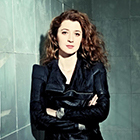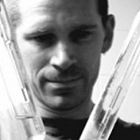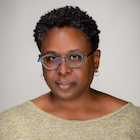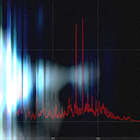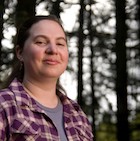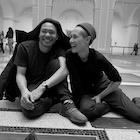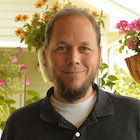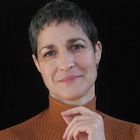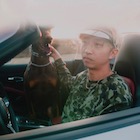MAT Seminar Series 2020 • 2021
Spring 2021
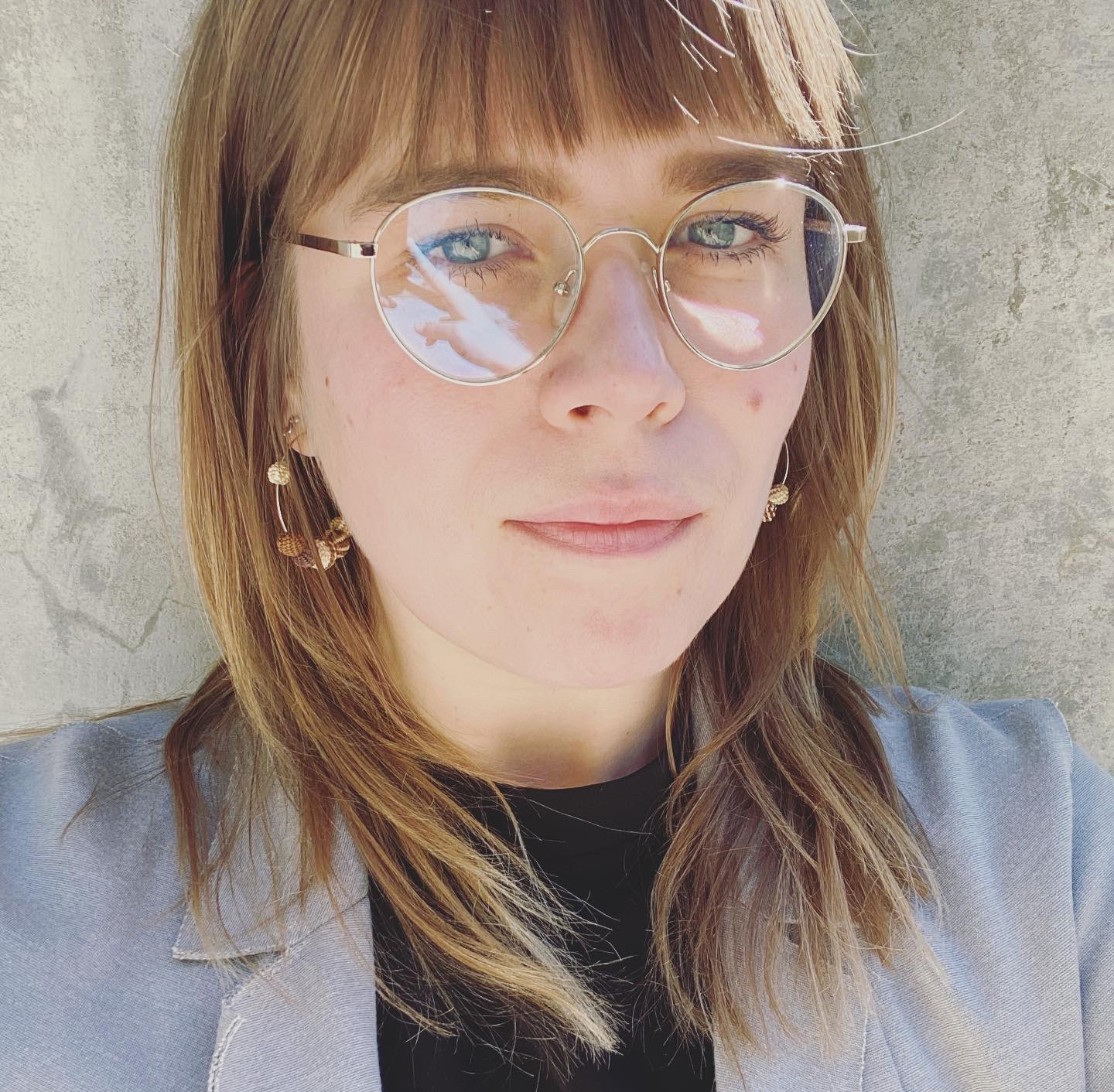
Abstract
The lecture will explore how creative and immersive technologies transform the way scientists, engineers, and astronauts are studying our solar system and beyond. We will focus on the history of robotic exploration at NASA Jet Propulsion Laboratory and connect that history to the evolution of immersive technologies. Sasha will expand upon the newest research in XR for both science and engineering at NASA-JPL and how this work relates to the current state of our world.
Bio
Sasha Samochina (sam-ocean-uh) is an award-winning creative technologist. She joined the team at NASA Jet Propulsion Laboratory after working in New York in video and web development and in Chicago, where she was a Media Producer at The Field Museum of Natural History. After dreaming up content for JPL’s Communications department, she began to explore the world of 360 videos and Cross Reality (XR). Through Sasha’s visualization skills, she pioneered the first-ever 360° video release on NASA's social media. Currently, she manages the Data Visualization & Infusion Group (174C) and is the Project Lead for JPL’s ProtoSpace software. Sasha dedicated herself to creating software that incorporates innovative forms of visualization that aid scientists, engineers, and astronauts in transforming their workflow. She leverages that same experiential technology to educate and inspire the public to engage in STEAM. She loves all things digital, animal, sound-emitting, cosmic, and views the world through XR-colored glasses.
https://www.cloudsasha.com/>
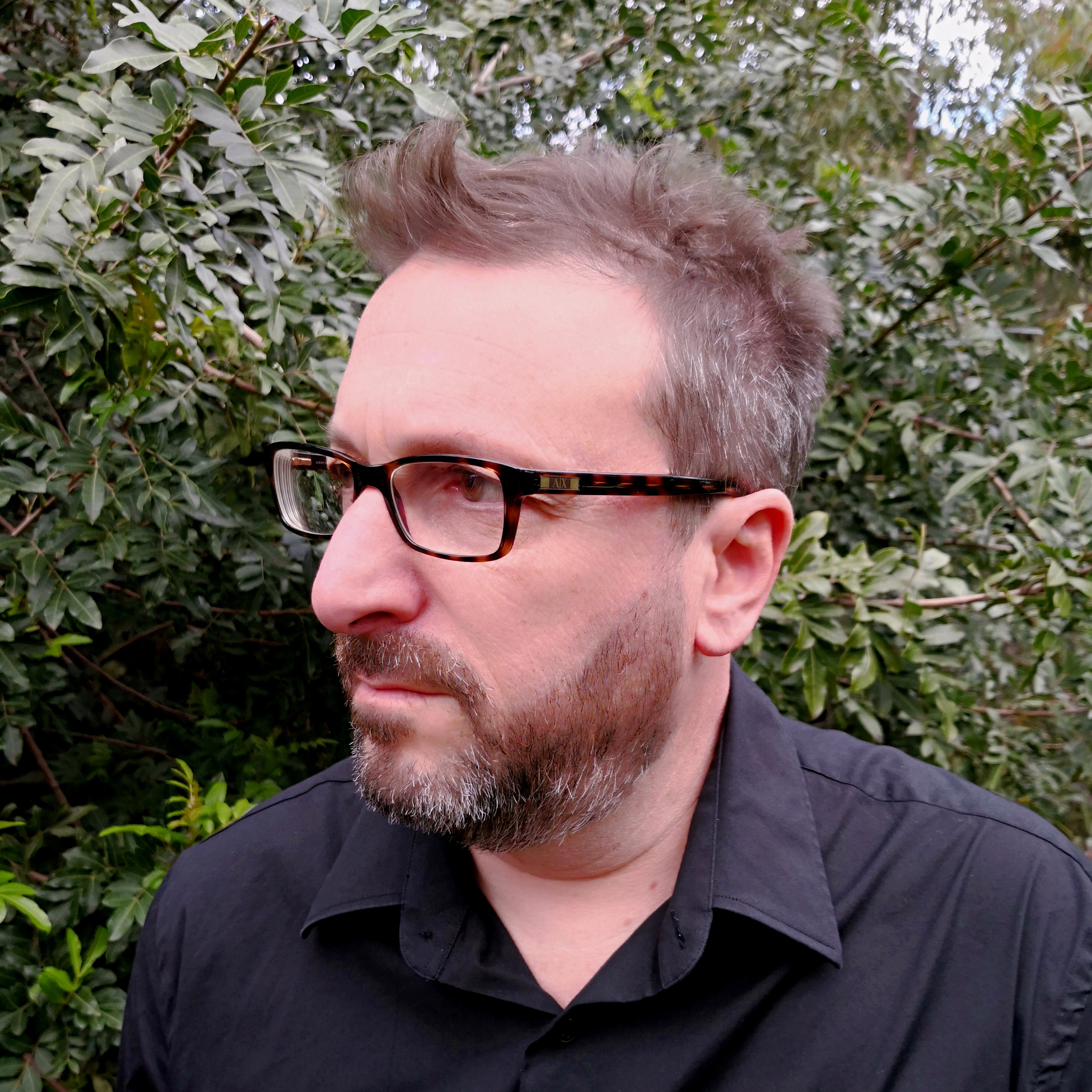
Abstract
“…I envision a future ‘post-corporeal’ connection between body, instrument, space and time where creative production tools cease to be divorced from the biological body, instead artist and artwork are one in the same. The complexities and nuances that these ‘prepared’ living entities can embody will give rise to a new kind of performative entity, an entity physically removed from the human but linked through lab-based processes in which biopsied material grown outside of the donor’s body (in vitro) control a creative, hybridised entity or specifically, an - in-vitro Intelligence driven Surrogate Performer….” In this presentation, I hope to propose two new concepts: ‘in-vitro Intelligence’ and ‘Surrogate Performer’ that I believe are essential for the discussion about my recent projects: Revivification, Bricolage and cellF and describe some of the methodologies and theories that underpin my artistic practice with some preliminary discussion of terminology, ethics and robotic embodiment as an artistic strategy.
Bio
Guy Ben-Ary, is an award winning Perth based artist and researcher. He currently works at SymbioticA, an artistic laboratory dedicated to the research, learning and hands-on engagement with the life sciences, which is located within the University of Western Australia. Recognised internationally as a major artist and innovator working across science and media arts, Guy specialises in biotechnological artwork, which aims to enrich our understanding of what it means to be alive. Guy’s work has been shown across the globe at prestigious venues and festivals such as the Beijing National Art Museum, MoMa, MONA, San Paulo Biennale, Moscow Biennale, ARS Electrona and more. His work can also be seen in the permanent collection of the Museum of Modern Art in New York. His work Bricolage won an award of excellence in the Japan media art festival, cellF & Silent Barrage were awarded an Honorary Mention in Prix Ars Electronica (2017, 2009) and Silent Barrage also won first prize at VIDA, a significant international competition for Art and Artificial Life. Interested in how art has the potential to initiate public debate on the challenges arising from the existence of these liminal lives, Ben-Ary creates artworks designed to problematise current and emergent bio-technologies’ influence on the shifting forces that govern and determine life, death and sentience.
http://guybenary.com/
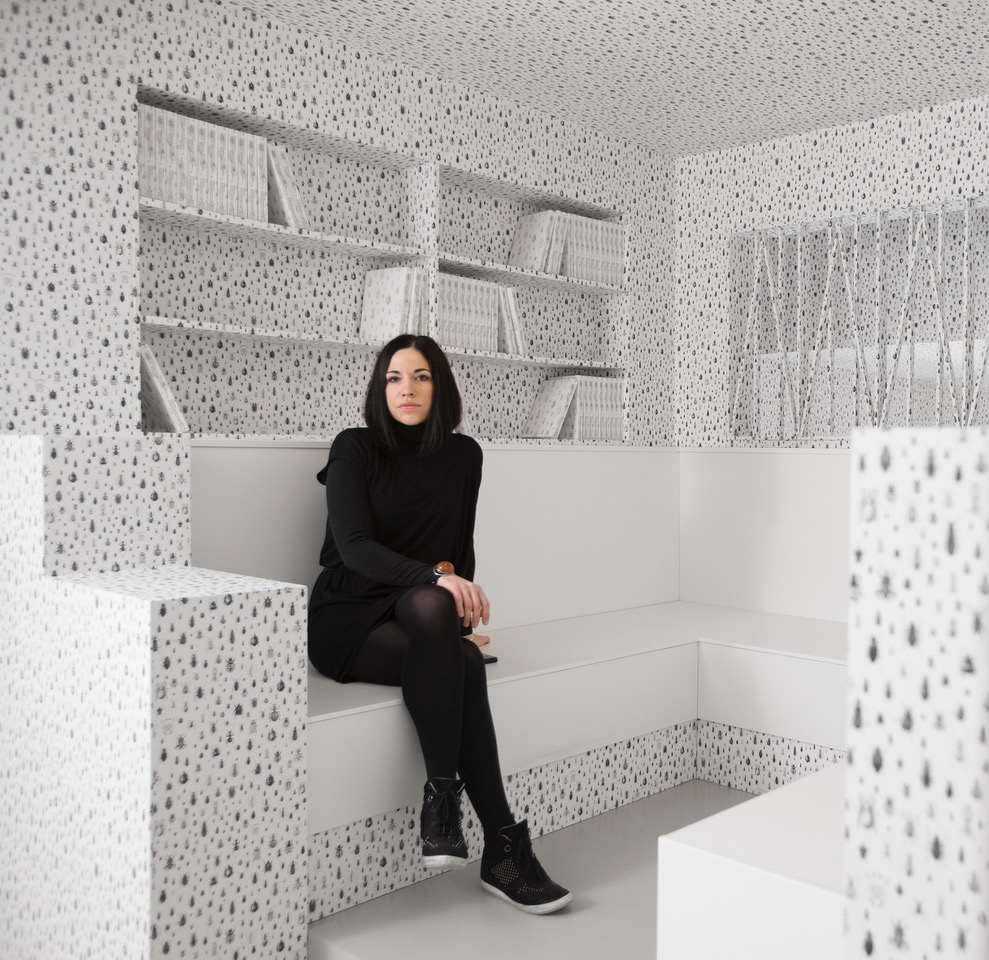
Abstract
Jasmina Cibic will present her talk On Ornamental Rashes of Ideology, where she will focus on her research and exhibition projects that delved into the co-relation of contagion of ideology and how it spread via the aid of scenographic (state endorsed) spectacle. Jasmina is a London based artist who works in performance, installation and film, employing a range of activity, media and theatrical tactics to redefine or reconsider a specific ideological formation and its framing devices such as art and architecture. Her work draws a parallel between the construction of national culture and its use value for political aims, addressing the timelessness of psychological and soft power mechanisms that authoritarian structures utilise in their own reinsertion and reinvention.
Bio
Jasmina Cibic represented Slovenia at the 55th Venice Biennial with her project “For Our Economy and Culture”. Her recent exhibitions include solo shows at: Museum of Contemporary Art Ljubljana, CCA Glasgow, Phi Foundation Montreal, BALTIC Centre for Contemporary Art Gateshead, Kunstmuseen Krefeld, Aarhus 2017, Esker Foundation Calgary, Museum of Contemporary Art Zagreb, Museum of Contemporary Art Belgrade, MGLC Ljubljana and Ludwig Museum Budapest along with group exhibitions at Steirischer Herbst ‘19, MOMA NY, MUMA Monash Museum, CCS BARD and Guangdong Museum of Art China. Cibic’s films have been screened at Whitechapel Gallery, CCA Montreal, Pula Film Festival, HKW Berlin, Louvre, Les Rencontres Internationales Paris, Dokfest Kassel and Copenhagen International Documentary Festival. Cibic has been shortlisted for the Jarman Award (2018) and was the winner of the MAC International Ulster Bank and Charlottenborg Fonden awards (2016) and B3 Biennial of the Moving Image Award (2020). Her upcoming solo shows include macLyon, Museum Sztuki Lodz and the Museum der Moderne Salzburg.
https://jasminacibic.org/>
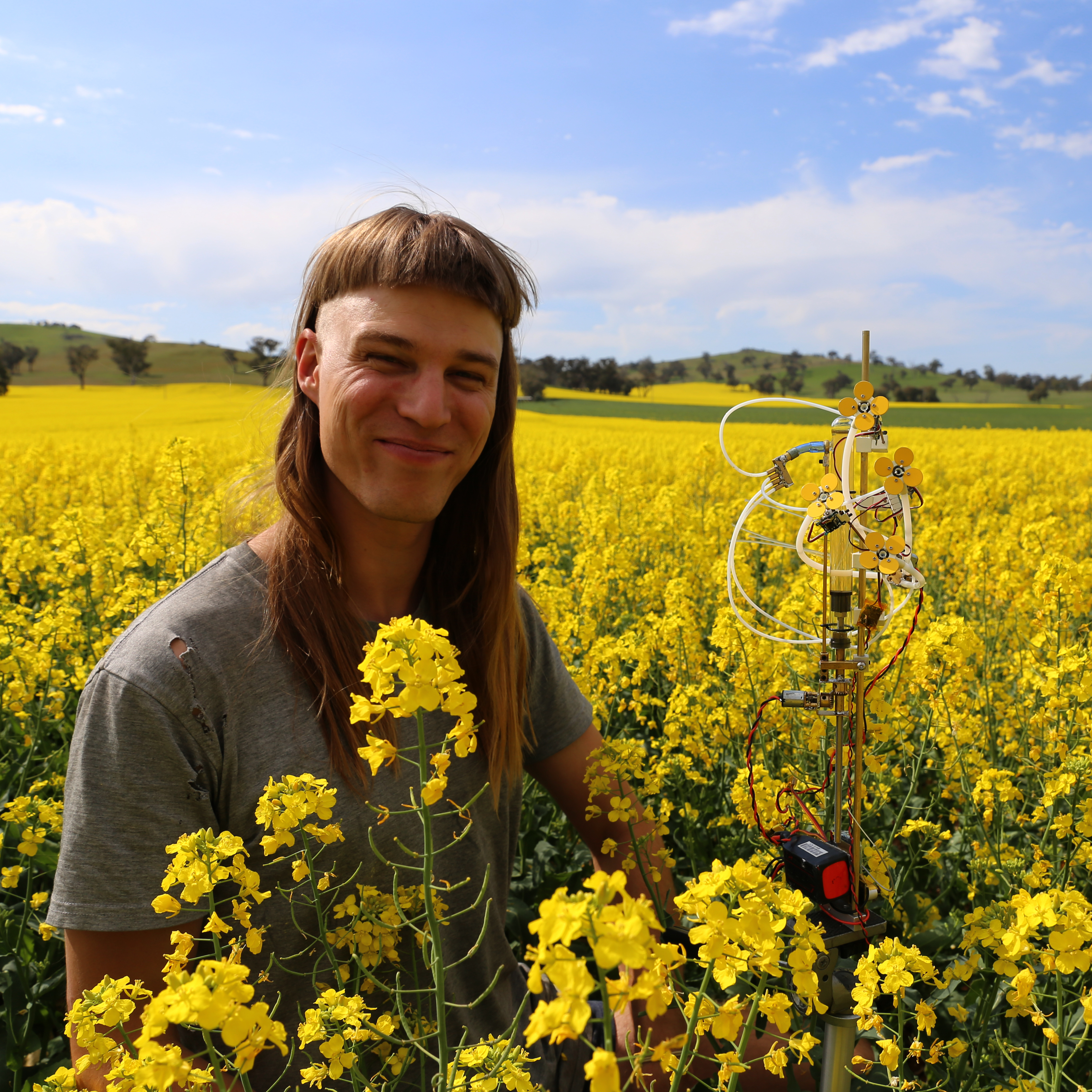
Abstract
A biographical presentation of Michael Candys practice as he attempts to brute-force an understanding of technology
Bio
Michael Candy works with a vocabulary of robotics, hardware hacking, intervention and video. This didactic practice seeks to mediate the liminal realm that technology oppresses on the physical world. His installations and projects often emerge as social experiments or ecological interventions in public space.
Candy has been involved in many international and local projects and exhibitions, notably: Water, (GOMA, Brisbane), Adelaide Biennial of Australian Art, (AGSA, Adelaide), Ars Electronica Festival, (Linz, Austria), The Kathmandu Triennale (Kathmandu,Nepal), The Forum of Sensory Motion (Athens, Greece), The Instrument Builders Project + Hackteria Lab (Yogyakarta, Indonesia) and Hawapi (Huepetuhe,Peru)
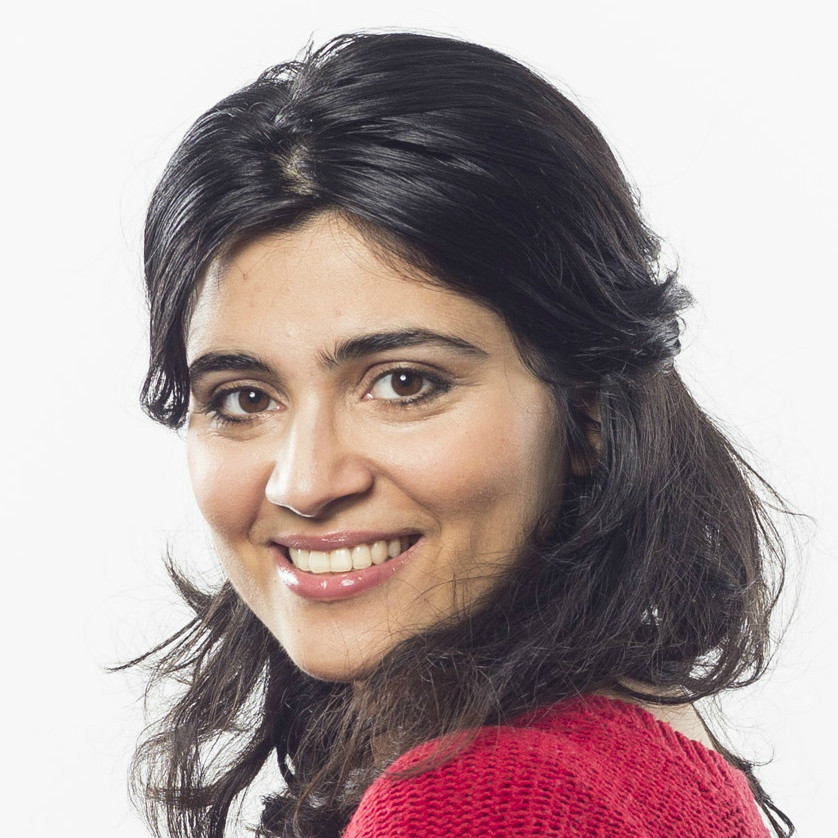
Abstract
Can a non-human organism carry and pass on the nostalgic memory of a human being? Could we create hybrid creatures in the lab in order to improve our understanding of the complex relationship between humans and other organisms?
I am driven by the constant inner desire to discover my humanity through the perspective of the non-human beings around me. For that, I shamelessly use advanced techniques in biotechnology, computing and engineering, not to make an award-winning discovery, but to discover myself.
I will talk about how I express myself through some of my work, ranging from developing microfluidic biochips for personalized healthcare to Semina Aeternitatis created with Margerita Pevere - an art piece that takes a hybrid approach on immortality, by entwining human memories with bacterial inheritance.
Bio
Mirela (assistant professor, ATLAS Institute, Computer Science) investigates the extent to which we can change healthcare to make it a personal process. Her research focuses around microfluidic biochips, devices that enable direct interaction of humans with their microbiome for diagnosis purposes. Mirela is an active contributor to the DIYBio movement, having led and co-founded community wetlabs. In this context, she organizes interactive performances, art installations and open workshops, in order to engage the public in direct interaction with living materials (e.g., bacteria, viruses, fungi). Mirela received her PhD from the Technical University of Denmark in 2014, and until 2018, she was a postdoc in Patrick Baudish's lab at Hasso Plattner Institute in Germany. Since 2019, she leads the Living Matter Lab at CU Boulder
"http://personallab.org/"Instagram: @livingmatterlab"
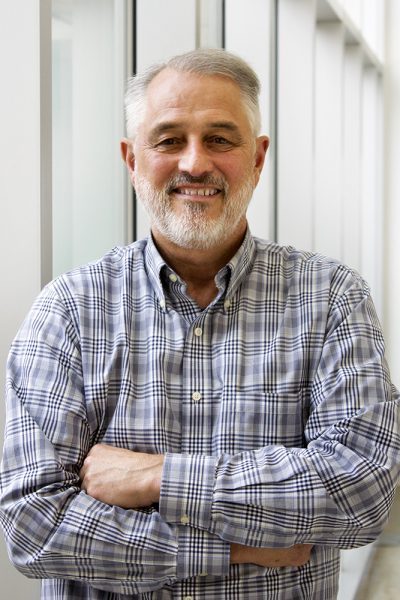
Abstract
There is much international discussion and interest in how to combine the arts, sciences and new technologies to address certain research agendas. An exemplar is the European Union STARTS program which funds across the three disciplines. Perhaps we need to rethink along the lines of Dr. Marybeth Berk's "More than my Title". She calls herself "Creative Disruptor" because she blends her expertise as an artist/researcher/educator/designer.
Roger Malina has a Phd in Astrophysics and a PhD in Art, and has extensive experience in academic publishing and teaches cross disciplinary courses.
He will discuss, through the use of 'exemplars' , emerging international trends in areas from AI research, astrophysics, bioart to business.
He will try to focus on the heterogeneous perspectives of todays graduate students and will solicit interventions from members of the seminar.
Bio
Roger Malina is a physicist, astronomer and Executive Editor of the Leonardo publications at MIT Press. With dual appointments as Professor of Arts and Technology and Professor of Physics at UT Dallas, his work focuses on connections among the natural sciences and arts, design and humanities.
Malina is the former Director of the Observatoire Astronomique de Marseille Provence (OAMP) in Marseille and was a member of its observational cosmology group which collaborated on investigations regarding the nature of dark matter and dark energy. He has been a member of the Mediterranean Institute for Advanced Study (Institut Méditerranéen de Recherches Avancées, IMERA), that contributes to trans-disciplinarity between the sciences and the arts and places emphasis on the human dimensions of the sciences.
With a specialty in space instrumentation, Malina was the principal investigator for the NASA Extreme Ultraviolet Explorer Satellite at the University of California, Berkeley. He also founded the Leonardo organizations in San Francisco and Paris, whose missions are to promote work that explores the intersection of the arts, sciences, and new technologies.
Malina received an Honorary Doctorate from the Polytechnic University of Valencia Spain, holds a BS in Physics from the Massachusetts Institute of Technology and a PhD in Astronomy from the University of California, Berkeley.
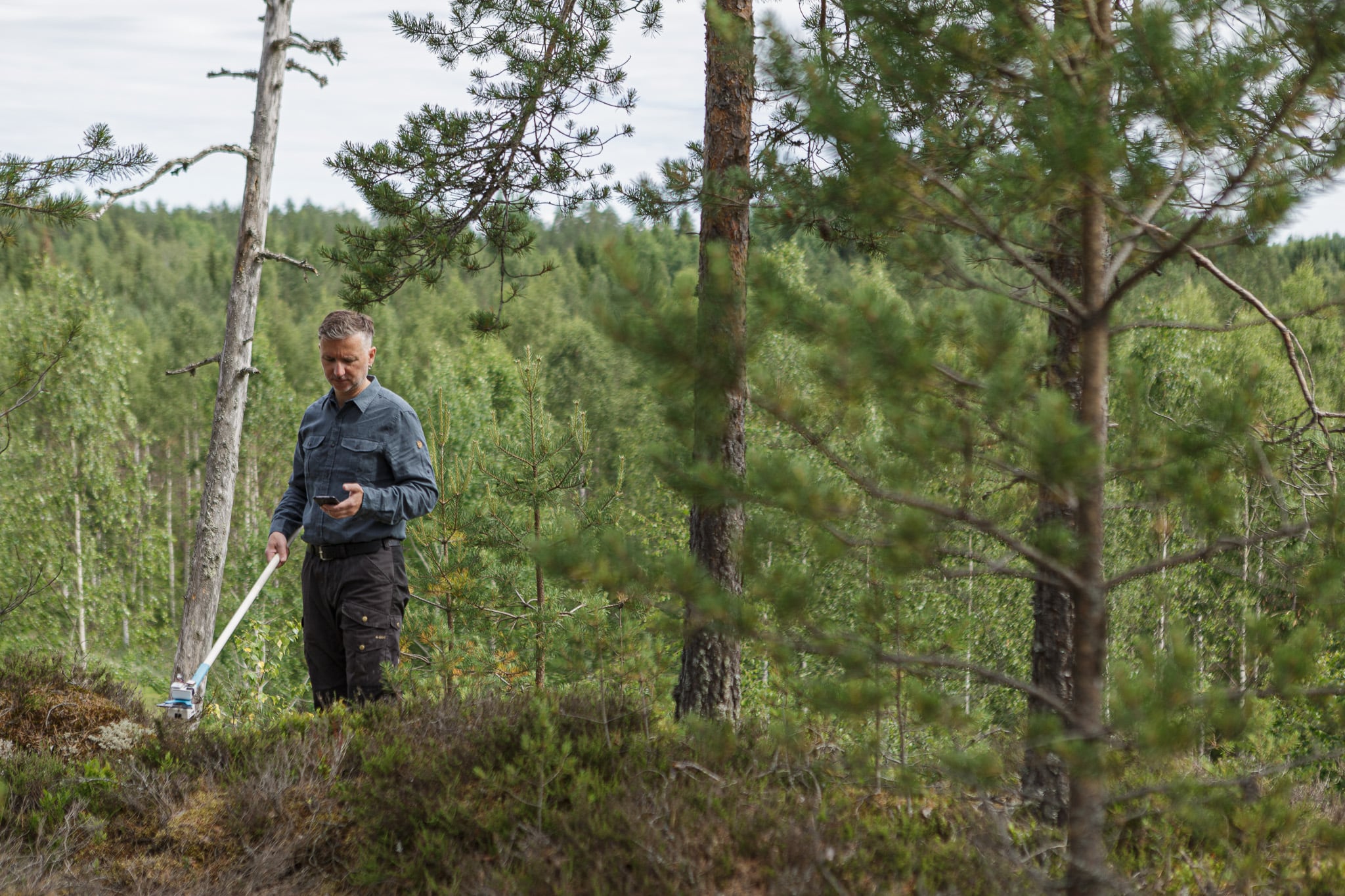
Abstract
Deep time is understood as the concept behind geological time: the history of the earth from its beginnings as a molten ball of matter until the present. Deep futures do not yet exist, they are a thought-vehicle to speculate within the probability space of a future earth. The realiza-tion that anthropogenic impact is leading to transformations of the earth-system which follow through into deep futures is not only discussed within the sciences. The Anthropocene and with it a strong interest directed towards deep time and matters of geology surface increas-ingly within artistic practices. At its core artists look at the origins and consequences of hu-man impact and speculate about deep futures. Berger’s own interest, manifested in his artis-tic work, is to investigate the dichotomy between human time perception and the time in bio-logical, environmental, and geological processes which we as humans are part of. This dichotomy arises from the present as we as individuals are challenged to change our way of life and to contribute to endeavours and measures to secure a future for humans beyond our lifetime.
Bio
Erich Berger is an artist, curator and cultural worker based in Helsinki Finland. His focus is on the intersection of art, science and technology with a critical take on how they transform society and the world at large. Throughout his practice he has explored the materiality of information, and information and technology as artistic material.
Berger's current interest in issues of deep time and hybrid ecology led him to work with geological processes, radiogenic phenomena and their socio-political implications in the here and now. He moves between visual arts and science in an area which he also investigates and develops as director of the Bioart Society in Helsinki which was awarded the Finnish State Prize for multidisciplinary art in 2017. His installations, performances and interfaces are exhibited widely and Berger received awards from renowned institutions such as Prix Ars Electronica (AT), ZKM (DE), Vida Telefonica (ES), Files Prix (BR) and Arts at CERN (CH).
"http://randomseed.org"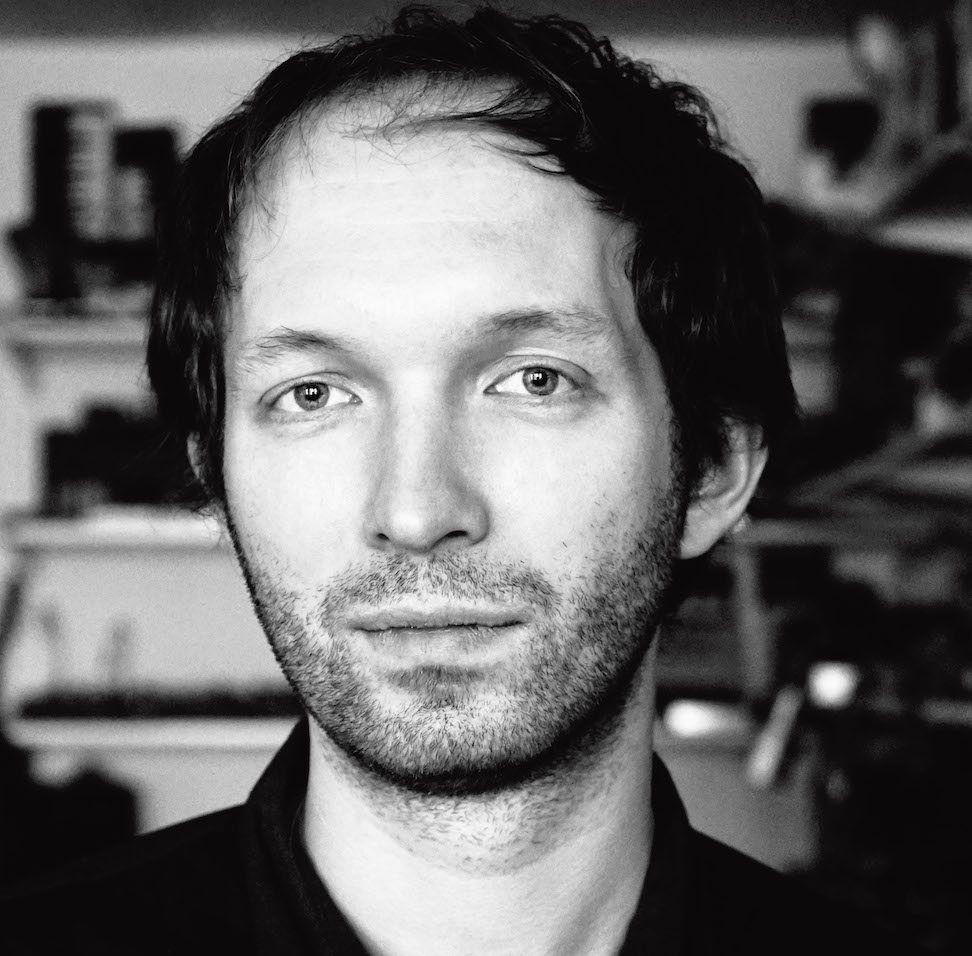
Abstract
Dmitry Morozov aka ::vtol:: in his lecture "Atypical mechatronics" will talk about the work of a media artist at the intersection of new technologies and contemporary art. Taking into account the specifics of the genre, media artists comprehend modern technologies from an artistic point of view, studying various fields and directions, such as sound art, robotics, interactive objects that serve as inspiration and become the basis for their works.
Dmitry defines the art objects created by him as autonomous systems with interactive elements. Many of the objects involve a sequential elaboration of concepts in order to create the "myths" behind each work. Explores the themes of chaos and self-organization of systems, analyzing social, biological, physical phenomena. In his works, he constantly refers to the concepts of "Deep Media" and "Media Archeology".
Bio
Dmitry Morozov aka ::vtol:: (b.1986, Moscow) is a transdisciplinary artist and researcher. He focuses on contemporary media arts including sound, robotics and installation, placing special emphasis on the link between emergent systems and new kinds of technological synthesis.
His works have been exhibited at museums and galleries worldwide, including the NCCA, MMOMA, Garage Museum of Contemporary Art, Tretyakov State Gallery, Electromuseum, Laboratoria Art&Science Space (Moscow), Laznia Center for Contemporary Arts (Gdansk), ZKM Zentrum (Karlsruhe), Boulder Museum of Contemporary Art (Boulder), National Taiwan Museum of Fine Arts (Taichung), Kapelica gallery (Ljubljana), ArtScience Museum (Singapore) etc., in 4th MBCA (Moscow), SIGGRAPH 2016 (Anaheim) and in festivals such as Mirage (Lyon), Ars Electronica (Linz), Future Everything (Manchester) and CTM (Berlin)
He is the award winner of the Sergei Kuryokhin Prize (Russia, 2013 and 2020), Prix Cube (France, 2014) and also received honorary mentions at VIDA 16.0 (Spain, 2014) and Prix Ars Electronica (Austria, 2015, 2017).
"Dmitry Morozov aka ::vtol::"Winter 2021
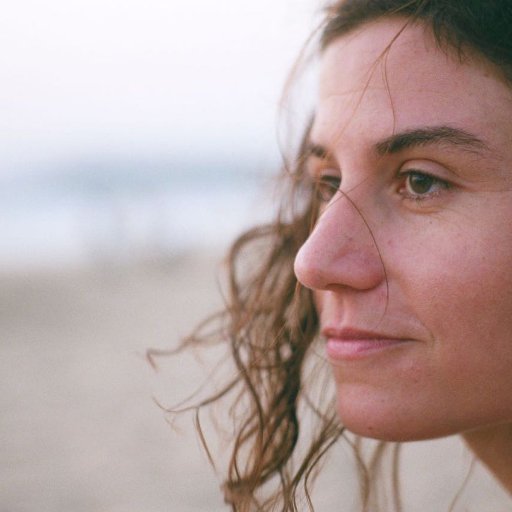
Abstract
Complexity of the biotechnological environment we are part of is difficult to comprehend. Understanding art as an endless exercise in perception can help us not only to understand but also to feel, experience and collaborate in the entangled networks that sustain us.
Artistic practice of Saša Spačal researches how signals such as the sound of symbiosis, the vibrations of mushrooms, the smell of antibiotics and microbiologically enriched air help us to map out our position in networks and to become aware of the multiplicity of feedback loops through which interspecies communication is enacted. Once we step down from the anthropocentric throne, non-human actors such as bacteria, fungi, and plants can teach us about diverse ways of connecting, not as our opposite, but as part of us and as collaborators in biogeochemical processes. Dualisms such as natural and artificial, virtual and material, technological and ecological intertwine into opaque biotechnological multiplicities of planetary dimensions, which humanity is trying to understand by developing models that are more or less useful. Perhaps in times of anthropogenic crisis, it would be wise to ask how empathic practices of caring collaboration can be developed through the models, theories, cartographies and stories we create.
Bio
Saša Spačal is a postmedia artist working at the intersection of living systems research, contemporary and sound art. Her artistic research focuses on entanglements of environment-culture continuum and planetary metabolism. By developing technological interfaces and relations with organic and mineral soil agents, she tries to address the posthuman condition that involves mechanical, digital and organic logic within biopolitics and necropolitics of our times.
Her work was exhibited and performed at venues and festivals, such as Ars Electronica Festival (AT), Prix Cube Exhibition (FR), Transmediale Festival (DE), Athens Digital Arts Festival (GR), Perm Museum of Contemporary Art (RUS), Onassis Cultural Center Athens (GR), Chronos Art Center (CHN), Cynetart Festival (DE), National Art Museum of China (CHN), Museum of Contemporary Art Metelkova (SI), Kapelica Gallery (SI), Device_art (CRO), Art Laboratory Berlin (DE), Museum and Galleries of Ljubljana (SI), Museum of Contemporary Art Vojvodina (SRB), Mediamatic (NL) and Lisboa Soa Festival (PT). For her work she received Prix Ars Electronica honorary mention, Japan Media Art Award jury selection, Prix Cube nomination, New Technology Art Award nomination and was longlisted for New Aesthetica Prize.
"Agapea . Saša Spačal"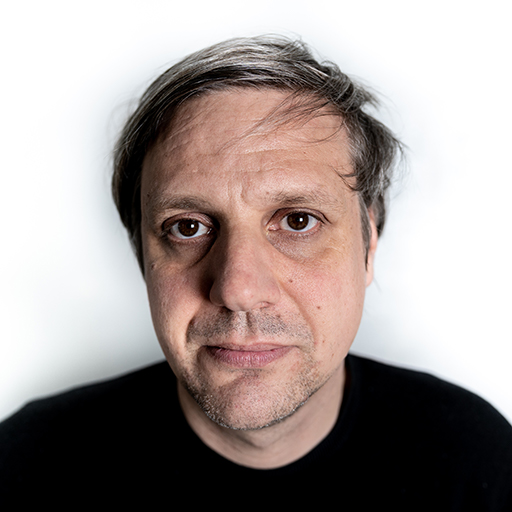
Abstract
Forbidden Grounds... or how I learnt To Stop Worrying And to Love the Noise
Bio
Ralf Baecker (*1977 Düsseldorf, Germany) is an artist working at the interface of art, science, and technology. Through installations and machines, Baecker explores the fundamental mechanisms of new media and technology. In his representations and spatializations of digital and technological processes, he offers a poetic sight behind the surfaces of contemporary image-making. At the core of his objects lies the entanglement of the virtual with the real, or rather, with the world. With a media-archaeological outlook, Ralf Baecker digs within obsolete devices for traces of functions and (power) structures that are still detectable in technologies today. His work seeks to form a hybrid between contemporary digital methodologies and a material-oriented artistic practice. As a result, he understands technology not as a tool but rather as an epistemological instrument to pose fundamental questions about a world perceived through technological impressions.
Baecker has been awarded multiple prizes and grants for his artistic work, including the grand prize of the Japan Media Art Festival in 2017, an honorary mention at the Prix Ars Electronica in 2012 and 2014, the second prize at the VIDA 14.0 Art & Artificial Life Award in Madrid, a working grant of the Stiftung Kunstfond Bonn, the Stiftung Niedersachsen work stipend for Media Art 2010 and the stipend of the Graduate School for the Arts from the University of the Arts in Berlin and the Einstein Foundation.
His work has been presented in international festivals and exhibitions, such as the International Triennial of New Media Art 2014 in Beijing, Künstlerhaus Wien, ZKM | Center for Art and New Media in Karlsruhe, Martin-Gropius-Bau in Berlin, WINZAVOD Center for Contemporary Art in Moscow, Laboral Centro de Arte in Gijón, Centre de Cultura Contemporània de Barcelona (CCCB), NTT InterCommunication Center in Tokyo, Kasseler Kunstverein and Malmö Konsthall.
Since 2016 he teaches at the University of the Arts Bremen as Professor for Experimental Design of New Technologies in the Digital Media program.
"https://rlfbckr.io/"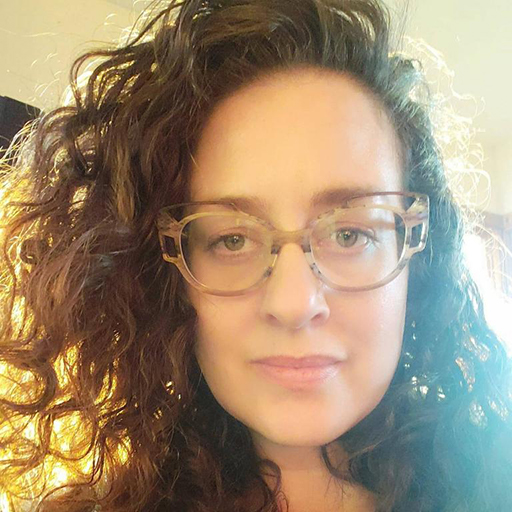
Abstract
Leonardo/The International Society for the Arts, Sciences, and Technology (Leonardo/ISAST) is an enterprise think tank that leverages hybrid, creative inquiry, and practice to build a better world. This lecture will focus on its full-cycle creative engine centered around impact through creative community and experimental publishing. Provoking questions such as how do we create a method/interface to contextually understand communities' needs/interests (human and non-human) that is platform agnostic?
Bio
Danielle Siembieda is a bold strategist on transdisciplinary programs, STEAM, and creative technology, With Leonardo/ISAST she develops collaborative explorations through partnership-driven creative programs and initiatives. She leads Leonardo's creative vision including the Leonardo Residency Platform, brand and communications and special projects. In her global partnership portfolio, she leads Leonardo's fast-growing LASER Network of cultural community leaders in over 45 cities world-wide bridging the language, culture, and discipline divide. She also fosters global scientific and artistic literacy through promotional leadership of Leonardo Music Journal and Leonardo journal, which has become the leading peer-reviewed publication of 50 years in art, science, and technology research.
Siembieda brings over 15 years of leadership experience in community development and strategic communications. She has served on the board of the Women Eco Art Dialogue, an organization founded on the mission to share art at the edge of social justice and the environment. She has been a leader and fellow at Emerging Arts Professionals where she received a MADE grant and was nominated for the Ebony McKinney Leadership award. She was the Community Engagement Manager for ZERO1: The Art & Technology Network where she designed and developed communities around art and technology through the App Lab and Art Ambassador Program; the Co-Project Manager of the San Jose Climate Clock Initiative, an ideas competition for green public art with the City of San Jose, San Jose State University, Montalvo Arts Center and ZERO1; the Managing Editor of SWITCH, the online Journal of New Media (no longer in publication); and a member of the San Jose Public Art Advisory Committee.
As an Alter Eco-Artist based in the San Francisco Bay Area Siembieda works at the intersection of community, emerging technologies, and the environment. She is also an artist in residence at the University of Santa Cruz Genomics Institute home of the Genome Browser through UCSC's Arts Research Open Lab. Siembieda has an MFA in Digital Media Art at San Jose State University at the CADRE Laboratory for New Media with a focus on green technology and sustainable materials. As the founder of Art Inspector: Saving the Earth by Changing Art, Siembieda has turned this social practice project into a business, acquiring funding from Silicon Valley Energy Watch and working with the City of San Francisco Department of Environment to help artists work healthier and safer. She defines her art at “Alter-Eco Art” bridging Eco-Art practice and New Media at the intersection of environment, technology, and community. Her work has been presented globally including the 01SJ Biennial in the heart of Silicon Valley, the National Gallery in Copenhagen and the Education Center of the National Hermitage in Saint Petersburg, Russia.
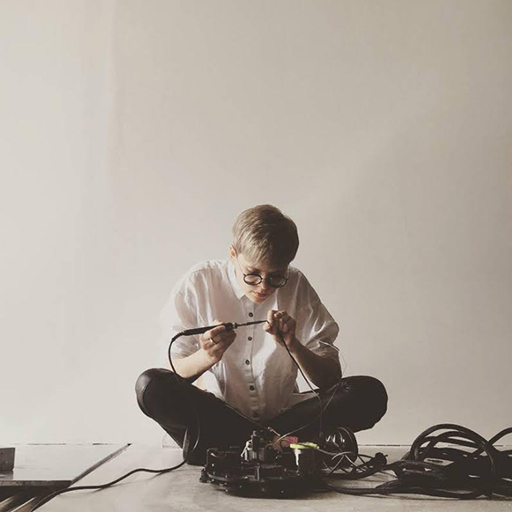
Abstract
Today the discourse of digital fabrication in the context of architectural research is dominated by the image of an industrial robot arm performing complex movements to produce complex geometry. But what happens when we move beyond appropriation of available hardware towards architecture-specific machines and devices?
Envisioning an entire ecology of machine species designed specifically to manipulate material at an architectural scale opens up a conversation about the role of robotic creatures in architecture beyond construction. A smaller fabrication machine capable of navigating an existing architectural space and safely operating next to a human implies that a fabrication process can be executed on site, and more importantly does not have to be finite, venturing into the topics of adaptive and reconfigurable spaces.
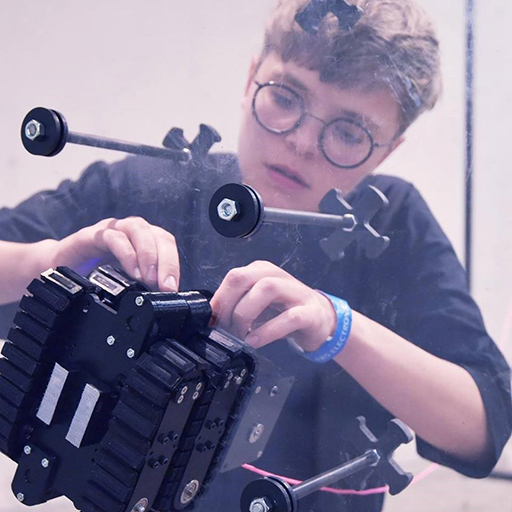
Bio
Maria Yablonina is an architect, researcher, and artist working in the field of computational design and digital fabrication. Her work lies at the intersection of architecture and robotics, producing spaces and robotic systems that can construct themselves and change in real-time. Such architectural productions include the development of hardware and software solutions, as well as complementing architectural and material systems in order to offer new design spaces.
Maria’s practice focuses on designing machines that make architecture — a practice that she broadly describes as Designing [with] Machines (D[w]M). D[w]M aims to investigate and establish design methodologies that consider robotic hardware development as part of the overall design process and its output. Through this work, Maria argues for a design practice that moves beyond the design of objects towards the design of technologies and processes that enable new ways of both creating and interacting with architectural spaces.
Maria has been commissioned and exhibited by institutions including Milan Design Week, Ars Electronica (Linz), Kapelica Gallery (Ljubljana), the Cooper Union, and the Moscow Institute of Architecture. She has also collaborated internationally on research with both universities and companies, including Autodesk Pier 9 (San Francisco), ETH Zurich, WeWork (New York), and the Bartlett School of Architecture (London).
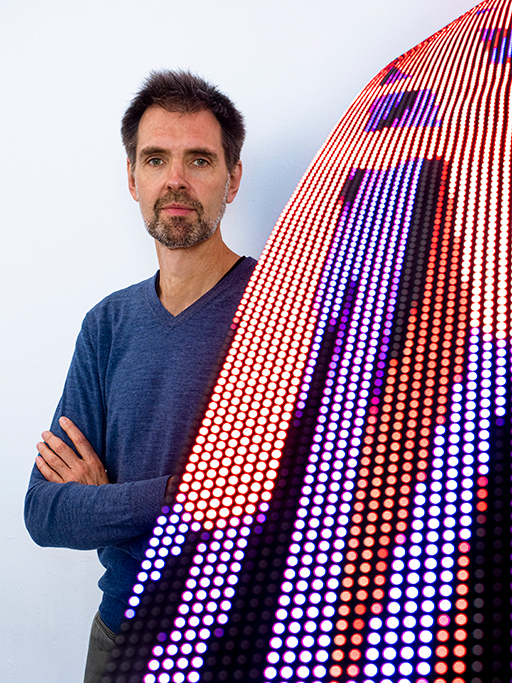
Abstract
FROM SMALL DATA TO BIG DATA: an artistic journey through the digital transformation of the archive.
Memory, and its loss, are a central theme in my artwork. Unless we remember, we are condemned to an amnesiac present, texture-less and flat, lacking the perspective of time.
My Small Data series tackles such issues in different ways. I have scoured junkyards, recycling centers and flea markets, looking for examples of aging technologies that defined our existence in the not-so-distant past. What we throw away holds an accurate portrait of who we were. VHS tapes, 35 mm film, hard discs, CDs, to name just a few obsolete mediums that I have used in my art, are all depositories of our memories. When tossing them out, we are also discarding an important part of ourselves. By projecting video animations onto old media, I attempt to reignite life back into them so as to reveal the shared memory they hold within.
More recent projects have ventured into big data, and the implications of ever-expanding and constantly mutating digital archives. My algorithmic data murals are large-scale abstract projections that react in real time to different data sets, including financial transactions, online sales, trending internet search queries and breaking news events. These data murals attempt to capture the ceaseless flow of information, seeking out internal rhythms and repeating patterns that result in hypnotic compositions. In the last 15 years, cloud-based archives have profoundly altered how we create, consume and distribute knowledge. They have also left in their wake the ruins of material-based technologies previously used to store information. My artwork is an attempt to understand how our identities, our memories and our sense of self are being profoundly affected by these rapid technological changes.
Bio
Born in Madrid (1964) to a Spanish father and an American mother, Daniel Canogar´s life and career have bridged between Spain and the U.S. Photography was his earliest medium of choice, receiving a M.A. from NYU at the International Center of photography in 1990, but he soon became interested in the possibilities of the projected image and media art.
He has created permanent public art installations with LED screens, including Aqueous at The Sobrato Organization (Mountain View, CA, 2019); Pulse, at Zachry Engineering Education Complex in Texas A&M University (College Station, TX, 2018), Tendril for Tampa International Airport (Tampa, FL, 2017) and Cannula, Xylem and Gust II at BBVA Bank Headquarters (Madrid, 2018). He has also created public monumental artworks in different mediums such as Amalgama El Prado, a generative video-projection projected on the Museo Nacional del Prado façade and created with the Museum’s painting collection (Madrid, 2019); Constellations, the largest photo-mosaic in Europe created for two pedestrian bridges over the Manzanares River, in MRío Park (Madrid, 2010) and Asalto, a series of video-projections presented on various emblematic monuments, including the Arcos de Lapa (Rio de Janeiro, 2009), the Puerta de Alcalá (Madrid, 2009) and the church of San Pietro in Montorio (Rome, 2009). Also part of the series is Storming Times Square, screened on 47 of the LED billboards in Times Square (New York, NY, 2014).
His solo shows include “Billow” at bitforms gallery (New York, NY, 2020); “Liquid Memories” at sala Kubo-Kutxa (San Sebastian, 2019); Surge a temporary installation for the Grand Lobby Wall at Moss Arts Center, Virginia Tech (Blacksburg, VA, 2019); “Echo” at Paul and Lulu Hilliard University Art Museum (Lafayette, LA, 2019); “Melting the Solids” at Wilde Gallery (Geneva, 2018); “Fluctuations” at Sala Alcalá 31 (Madrid, 2017); “Echo” at bitforms gallery (New York, NY, 2017) and Max Estrella Gallery (Madrid, 2017); “Sikka Ingentium” at Museum Universidad de Navarra (Pamplona, Spain, 2017); “Quadratura” at Espacio Fundación Telefónica (Lima, 2014); “Vórtices”at the Fundación Canal Isabel II (Madrid, 2011); Synaptic Passage, an installation commissioned for the exhibition “Brain: The Inside Story” at the American Museum of Natural History (New York, NY, 2010) and two installations at the Sundance Film Festival (Park City, UT, 2011).
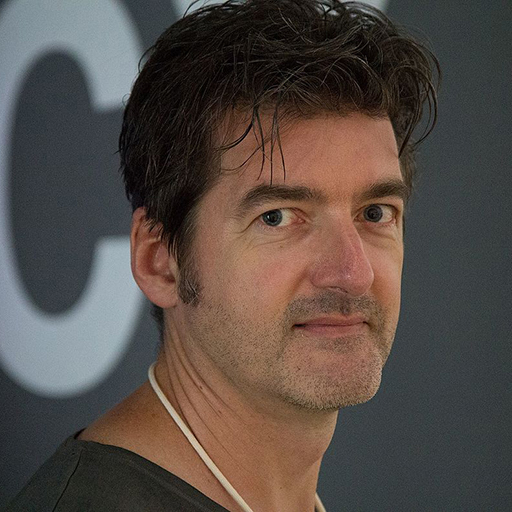
Abstract
Oliver Ressler is an artist and filmmaker whose work has focused on global warming as a central theme ever since he first began to exhibit. One of his first solo exhibitions was “100 Years of Greenhouse Effect” at Salzburger Kunstverein (1996). Several exhibitions, films, installations, billboards and photographic works on the theme have followed since then.
Oliver Ressler will talk about these works, putting a cycle of films – “Everything's coming together while everything's falling apart” (2016 – 2020) – at the center of the presentation. These films follow the climate justice movement in its struggles to dismantle an economic system heavily dependent on fossil fuels.
In the first film activists contest the UN Climate Change Conference in Paris in 2015, that proved the incapacity of governments to commit themselves to any binding agreement that would curtail global warming. The film on the Ende Gelände action in 2016 shifts the focus to a massive civil disobedience action at the Lusatia lignite coal fields (near Berlin), where 4,000 activists entered an open-cast mine. The film on the ZAD focuses on Europe’s largest autonomous territory that emerged from the struggle against the new airport of Nantes in France. The film about Code Rood highlights a civil disobedience action in the port of Amsterdam in June 2017, Europe’s second-largest coal port. The film on Limity jsme my leads us into the blockade of Bílina coal mine in Czech Republic and the detainment of the activists. The sixth film celebrates the Venice Climate Camp; 200 activists forced their way into the Venice Film Festival enclosure, where they occupied the red carpet for nine hours.
Please check out three of the films following the links below:
"Everything's coming together while everything's falling apart: Code Rood", 14 min., 2018"Everything's coming together while everything's falling apart: The ZAD", 36 min. 2017
"Everything's coming together while everything's falling apart: COP21", 17 min., 2016
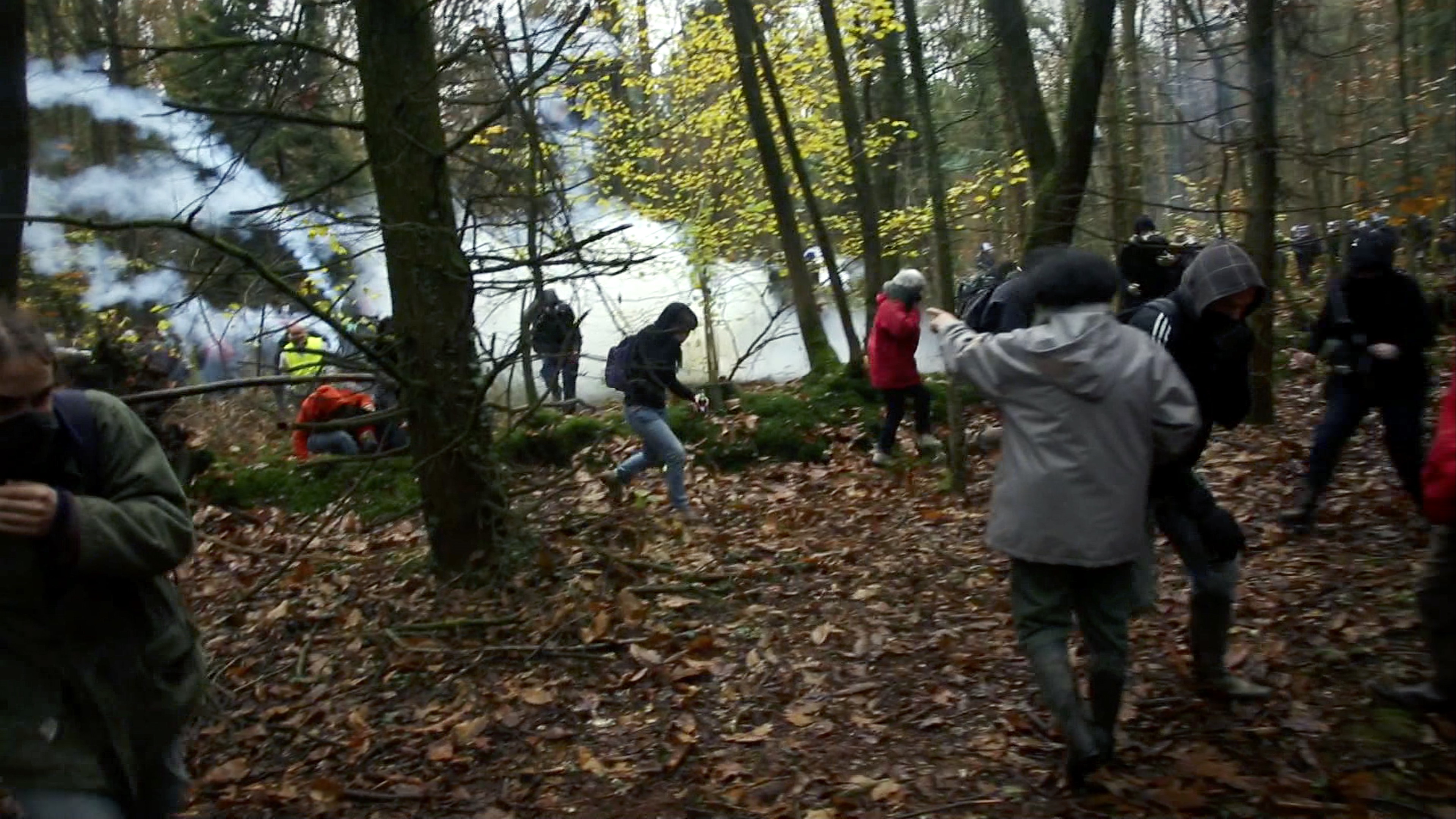
You can also subscribe to Ressler’s YouTube Channel, where he adds one film every week, available for free.
www.youtube.com/c/oliverresslerfilmsBio
Oliver Ressler lives and works in Vienna/Austria. He produces installations, projects in public space, and films on issues such as economics, democracy, migration, the climate catastrophe, forms of resistance and social alternatives.
He has had comprehensive solo exhibitions at Centro Andaluz de Arte Contemporaneo – CAAC, Seville; Wyspa Institute of Art, Gdansk; Lentos Kunstmuseum, Linz; MNAC – National Museum of Contemporary Art, Bucharest and SALT Galata, Istanbul. Ressler has participated in more than 400 group exhibitions, including Museo Reina Sofía, Madrid; Centre Pompidou, Paris; Van Abbe Museum, Eindhoven; MASSMoCA, North Adams, USA; the biennials in Prague (2005), Seville (2006), Moscow (2007), Taipei (2008), Lyon (2009), Venice (2013), Quebec (2014), Jeju (2017), Kyiv (2017), Gothenburg (2019), Stavanger (2019), and at Documenta 14, Kassel, 2017 (exhibition organized by EMST).
Ressler currently works on “Barricading the Ice Sheets”, a research project on the climate justice movement, funded by the Austrian Science Fund.
He was the first prize winner of the Prix Thun for Art and Ethics Award in 2016.
Website
www.ressler.at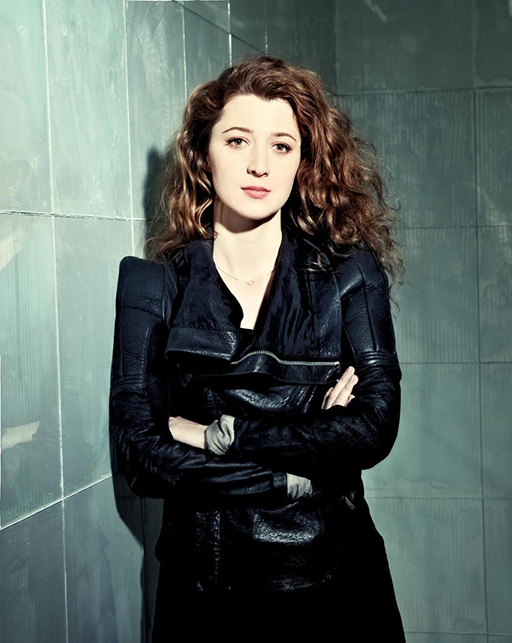
Due to the time difference, this seminar is scheduled for Monday morning at 9.30am.
Abstract
Since the early 1960s Russia has its own tradition of scientific-artistic synthesis: in the late Soviet Union technological aesthetics became a safe haven for artists working with abstractions and the heritage of avant-garde. The “Prometei” Center, founded by Bulat Galeev, actively worked in Kazan, kinetic artists (Viacheslav Koleichuk) created their pieces in Moscow and Leningrad, and numerous buildings inspired by bionics, space exploration and modern technologies appeared throughout all over the USSR. Now, in the era of a more self-critical art, artists might take a different view of technology. But the overall interest in science and collaborative work of people from different intellectual cultures is still strong. Russian science-art practitioners are not numerous but distinctive and internationally active. They include ::vtol::, Dmitrii Kawarga, Helena Nikonole from Moscow, “Where the Dogs Run” from Yekaterinburg and Egor Kraft from St. Petersburg.
In 2008 the first independent nonprofit science-art research, exhibition and production centre has been created by author of the talk. Laboratoria Art&Science Foundation specializes on building common ground between artists and scientific collectives where technological artworks are created through the interaction of diverse intellectual cultures on equal terms. Over more than a decade of practical experience, Laboratoria has developed a methodology for the interaction of four main participants: artists, scientists, engineers and curators in order to maintain a mutual flow of ideas. Three main methods of this methodology are Immersion, Transposition and Third-order Observation. These methods will be demonstrated on several recent examples of technological artworks produced by Laboratoria in collaboration with leading neuroscientists and deep learning researchers, resulted in the exhibition “Daemons in the Machine”(ММОМА, Moscow, 2018) devoted to re-thinking of AI technologies and its possible interplay with society and culture.
Bio
Daria Parkhomenko is the founding director and curator of LABORATORIA Art&Science Foundation, founded in 2008 as the first exhibition and research centre in Russia focused on the platforms of interdisciplinary interaction between contemporary art and science.
Parkhomenko graduated from Lomonosov Moscow State University in sociology and received her MA in art and cultural management at Moscow School of Social and Economic Sciences. She teaches Methodology and Practice of Science-Art at the Higher British School of Design (Moscow), and at the School of Contemporary Art MMOMA (Moscow), and at Saint Petersburg National Research University of Information, Technologies, Mechanics and Optics (ITMO, St. Petersburg). Collaborating with these and other institutions, she has organized numerous conferences, symposiums and talks on the topic of technological art and its prospects. She has also contributed as an author to a number of publications both in Russia and abroad and foreign editions, including: Open Codes, ZKM, 2019; The Art Magazine, Moscow, 2013; Digital art conservation, ZKM, Germany, 2012; Synergia, Arts Santa Monica, Barcellona, 2012; CyberArts 2011, Ars Electronica, 2011 ect.
Parkhomenko’s scientific interests, as reflected in her curatorial projects, include quantum physics, AI, neuroscience, alternative energy, climate change, space. She has curated more than 30 exhibitions, among them: “Daemons in the machine” group exh. (ММОМА, Moscow, 2018), “Quantum Entanglement 2.0” group exh. (Arsenal, Nizhny Novgorod, 2016), “Quantum Entanglement” (with Tom Higham, FutureEverything) group exh. (LABORATORIA, Moscow, 2015), “Superconduction” group exh. (Riga, 2015), “Ice Laboratory”, group exh. (LABORATORIA, Moscow, 2013), International symposium “Brainstorms. The Artist in the Context of Neuroscience” (Polytechnic Museum, Moscow, 2012), “Neuroscientific experiment 1. Measuring the Magic of Mutual Gaze”, Marina Abramovic (Garage, Moscow, 2011), “Infusion”, group exh. (LABORATORIA, Moscow, 2011), “Tele-Present Wind”, David Bowen (LABORATORIA, 2010).
She served as a jury member at Ars Electronica Festival (Linz, Austria) in Hybrid art nomination (2011), a laureate of the Public Prize “Cariatida” (2014) and a member of the expert board of the All-Russian competition for the award in the field of contemporary visual art “Innovation” (2015, 2016).
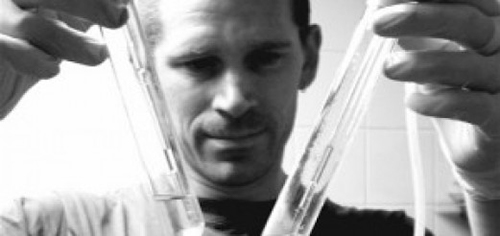
Abstract
This talk will discuss Andy Gracie's work and the way it has explored various strategies for what the Universe means to us, the significance and fragility of our existence within it, and how it will all end. This trajectory will begin with a series of works that performed astrobiological experiments, pass through intangible cosmic artefacts, briefly visit the aftermath of existential threats, and end with the end of the universe. In and around these destinations will be discussions of the social contract of disaster art in the current global situation and how artists can explore strategies for engaging with scientific institutions. The talk should last around 40 minutes and will invite discussion.
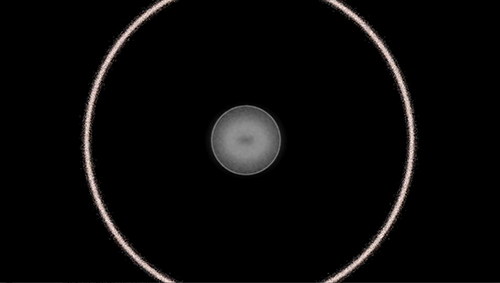
Bio
Andy Gracie works across various disciplines including installation, robotics, sound, video and biological practice. This work is situated at a point of separation between the arts and the sciences, creating situations of exchange which allow new understandings and knowledge systems to develop. Much of his work involves reactions to and engagements with the science of astrobiology and other forms of space research. He looks at space as a nonhuman and unfeeling environment, balancing wonder with awe and fear. His practice employs scientific theory and practice to question our relationships with exploration and experiment whilst simultaneously bringing into focus the very relationship between art and science, and how new knowledge is culturally assimilated. Much of the work also features an ongoing engagement with semiotics, simulation theory and apocalyptic scenarios.
His work has been exhibited widely and internationally in both solo and group shows and has included several special commissions for new works. He presents regularly at conferences and seminars across the globe and has published a number of articles and papers. His work has also been featured in books by Stephen Wilson, Linda Weintraub, William Myers, Maria-Antonia Gonzalez and Dmitry Bulatov.
His large scale installation 'Autoinducer_ph-1' has received honourable mentions from VIDA and Ars Electronica in 2007. The ongoing project 'Drosophila titanus' received an honorary mention from Ars Electronica in 2015.
Alongside his artistic practice he has co-founded the open art/science initiative Hackteria, an international network of artists and practitioners with a strong educational presence. He has co-produced, hosted and curated numerous exhibitions, workshop programs and art/science crossover events internationally.
Between 1999 and 2007 he worked at the University of Huddersfield as visiting lecturer, and later as course leader of the MA in Smart and Digital Design.
He is currently involved in a long term collaboration/residency with the School of Planetary Sciences at the Open University of Milton Keynes in the United Kingdom and the Institute of Cosmic Sciences at the University of Barcelona.
Fall 2020
https://ucsb.zoom.us/j/82079348260
Abstract
Igniting Change: asking, "what if" and "why not" from the margins. The DRIVE to be authentic in a world that marginalizes difference requires the grit to realize your personal vision no matter the roadblocks that detour, deflect, and try to stop you. Drive is fueled by an ambition, to not be satisfied with the status quo because you are curious, you allow yourself to experience life, and you are not afraid of risk. Drive is the challenge to anyone who tries to erase you from your excellence. Drive is creating a space to ask, “what if” and “why not” from the margins. Drive is the fuel to connect and share experiences with people you might not know; you do not know well; or you would never know because of perceived differences. Stories from Pamela's global travels and encounters with world citizens speak of angst and they speak of joy. They speak of shared values and they speak of the possibilities of change.
Bio
Pamela L. Jennings, Ph.D. is nationally recognized as a thought leader for integrative research and learning across the Arts and Technology with positions and projects at a range of higher education and federal institutions. She worked as a design researcher at IBM Almaden Research Center and SRI International. She served as a National Science Foundation Program Director and led the CreativeIT program and co-led several other programs in computer science and STEM education. Pamela has been involved in several National Academies of Sciences initiatives including a committee member for the “Integration of the Humanities and Arts with Sciences, Engineering, and Medicine in Higher Education: Branches from the Same Tree” consensus report. Pamela held the first joint professorial appointment between the Fine Arts and Human Computer Interaction Institute at Carnegie Mellon University. As the CEO of CONSTRUKTS, Inc. Pamela leads the development of an IoT and mixed-reality platform for learning. Having spent countless years teaching computational technologies to artists and engineers and participating in international communities of makers and hackers, she is deeply knowledgeable in developing products that are rooted by principles of human centered design. (www.CONSTRUKTS.com) Pamela received her Ph.D. from the Center for Advanced Inquiry in Integrative Arts, University of Plymouth School of Computing, Electronics, and Mathematics (U.K); MBA from the Ross School of Business, University of Michigan; MFA in Computer Art from School of Visual Arts, New York City; MA in Studio Art from New York University & International Center of Photography program; and BA in Psychology from Oberlin College & Conservatory. (www.pamelajennings.org/speaking.html).
https://ucsb.zoom.us/j/82482507142
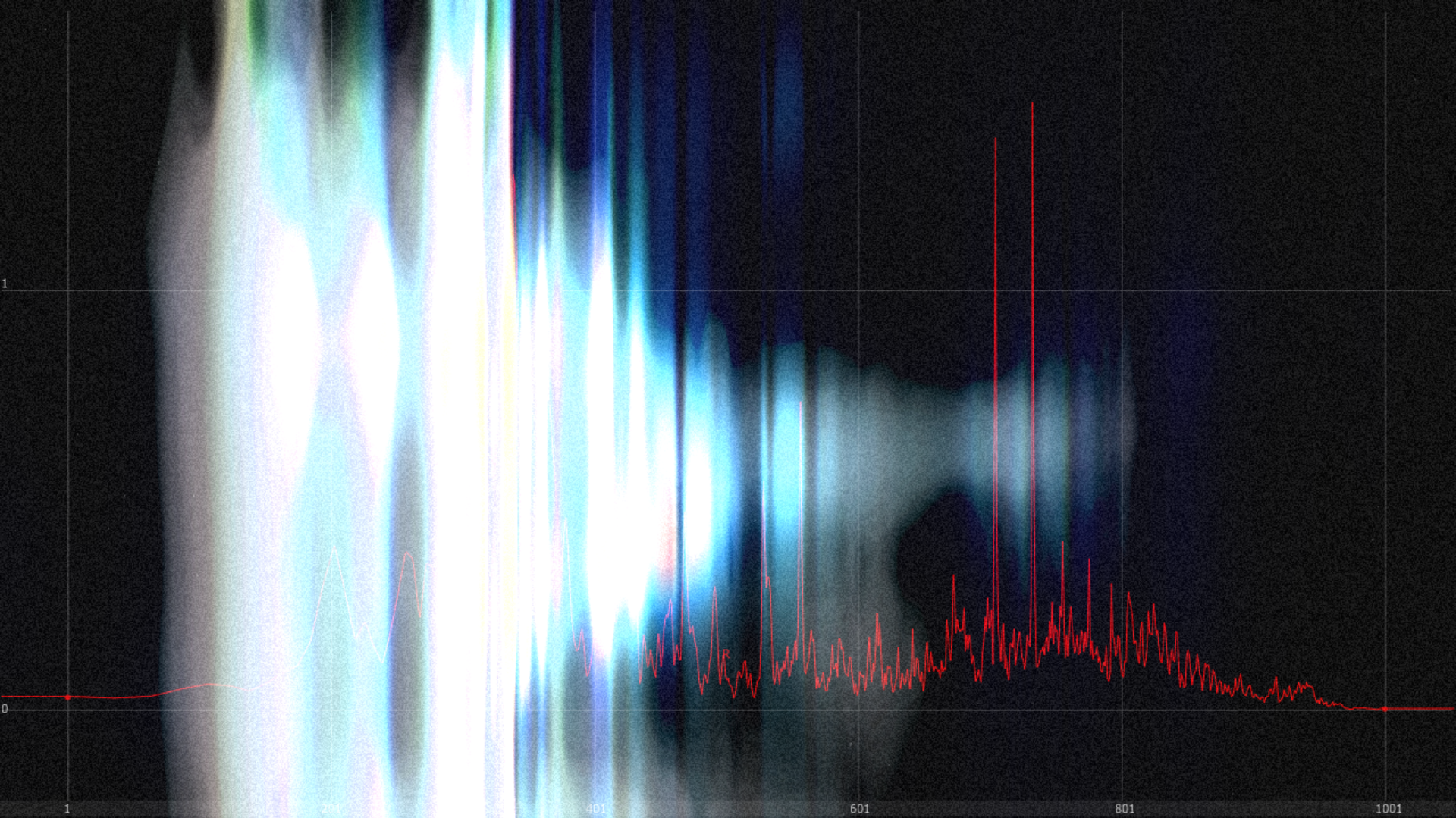
Abstract
Interspecifics presents a selection of its most recent projects, in order to analyze its creation strategies as well as the application of technologies derived from Artificial Intelligence and Machine Learning frameworks.
Bio
Interspecifics is an Independent artistic research bureau founded in Mexico City in 2013. We have focused our research on the use of sound and A.I., to explore patterns emerging from biosignals and the morphology of different living organisms as a potential form of non-human communication. With this aim, we have developed a collection of experimental research and education tools we call Ontological Machines. Our work is deeply shaped by the Latin American context where precarity enables creative action and ancient technologies meet cutting-edge forms of production. Our current lines of research are shifting towards exploring the hard problem of consciousness and the close relationship between mind and matter, where magic appears to be fundamental. Sound remains our interface to the universe. Our work has been supported by DAAD, International Cities for Advanced Sound, Laboratorio Arte Alameda, Telefonica Foundation, Bancomer BBVA Foundation, The National Fund for Culture and the Arts in México. Bauhaus-Universität Weimar and Universitat der Kunste Berlin in Germany. Museum of Modern art in Medellin in Colombia. National Council for Culture and the Arts and Museum of Contemporary art in Chile and shown at FACT Liverpool, European Congress for Artificial Intelligence in York, Spektrum, Acud Macht Neu, CTM Festival, and CLB in Berlin, ICAS Festival in Dresden, Casa del Lago, Centro Cultural de España, INDEX at the University Museum of Contemporary Art, Tamayo Museum. http://interspecifics.cc/work/
https://ucsb.zoom.us/j/86512005120
Abstract
Marginalized people, such as disabled individuals, often find themselves stigmatized and isolated. This can lead to a host of other challenges, including exacerbating current obstacles and creating new mental health concerns. My research explores how playful technology can support access to community for disabled individuals. In particular, games, such as Minecraft, are not only fun to play but can also be a place of community building and identity exploration. Communities use Minecraft as a foundation, but then also engage in a variety of other social platforms as well. In this talk, I will discuss how social technology plays a key role in facilitating access to community support and can bridge virtual and physical worlds in everyday life.
Bio
Kathryn E. Ringland is a UC President’s Postdoctoral Fellow at the University of California Santa Cruz. She holds a PhD in Informatics from the Donald Bren School of Information and Computer Sciences at the University of California Irvine. She received her B.S. in Psychology from Washington State University Vancouver. Her research interests include studying and designing technology for youth with disabilities. In her research, she is interested in how social media expands our definitions of sociality and the assistive role technology must play in our online and offline interactions.
https://ucsb.zoom.us/j/81474791758
Bio
Claudia Schmuckli is the inaugural Curator-in-Charge of Contemporary Art and Programming at the Fine Arts Museums of San Francisco. Since joining the Museums in 2016, she has developed a dynamic and innovative program including dialogical exhibitions and commissions featuring DIS, Sarah Lucas, Urs Fischer, Lynn Hershman Leeson, Leonardo Drew, Matt Mullican, Ranu Mukherjee, and Alexandre Singh. Most recently she curated Specter of Disruption, an exhibition drawn from the Museums’ Collections connecting the geological and colonial underpinnings of the de Young Museum to the current conditions in Northern California, and Uncanny Valley: Being Human in the Age of AI, the first major museum exhibition in the United States to reflect on the political and philosophical stakes of artificial intelligence from an artistic perspective. Previously, she was Director and Chief Curator of the Blaffer Art Museum at the University of Houston, where she organized over thirty exhibitions including solo shows dedicated to Matthew Ronay, Analia Saban, Slavs and Tatars, Candice Breitz, Tony Feher, Johan Grimonprez, Gabriel Kuri, Chantal Akerman, and Amy Sillman among many others. Schmuckli began her career in New York as a Curatorial Assistant at the Solomon R. Guggenheim Museum and an Assistant Curator at the Museum of Modern Art. She is a Swiss citizen and holds a Master of Arts degree in art history from the Ludwigs-Maximilians-Universität in Munich, Germany.
https://deyoung.famsf.org/exhibitions/uncanny-valley
co-sponsored by 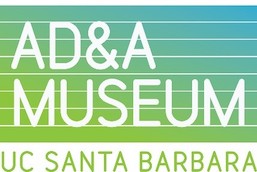
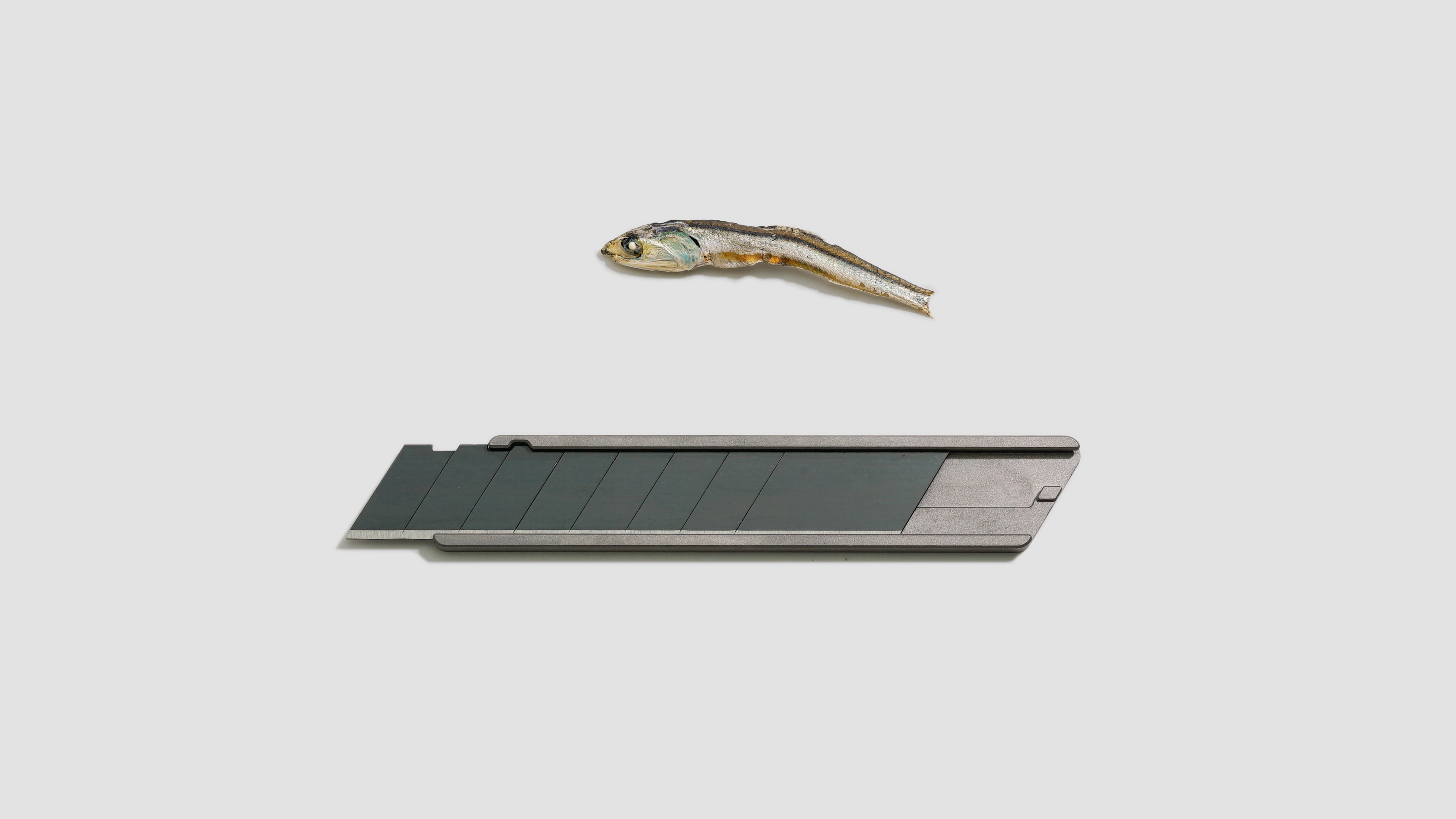
https://ucsb.zoom.us/j/84152555951
Abstract
Join us in our home/studio/shop as we meander through a selection of projects and ideas that have kept us busy and fed over the past 11 years.
Bio
CW&T is the art and design practice of Che-Wei Wang + Taylor Levy. We live in a world of our own making. It's a world where every object has its purpose, although not always purposeful, and where common objects receive uncommon consideration.
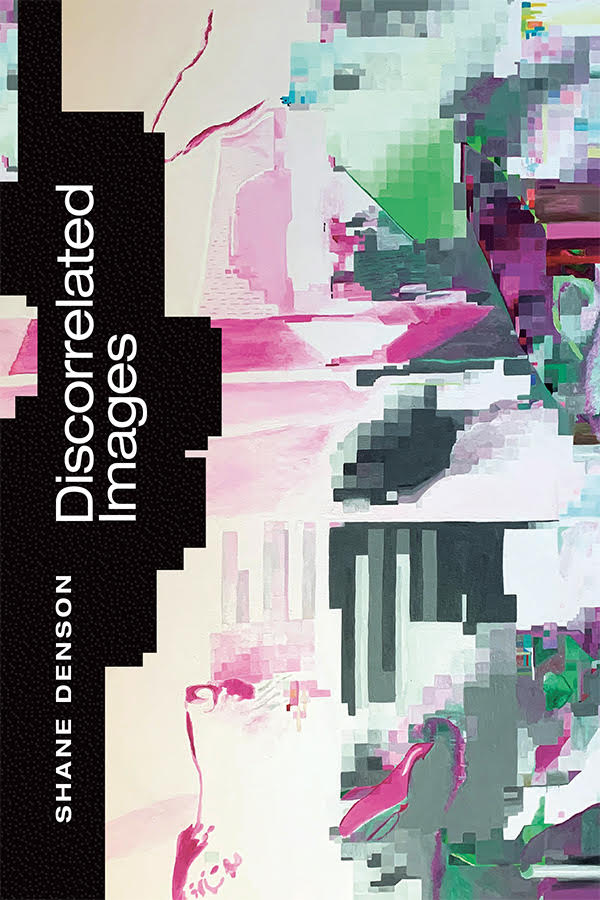
https://ucsb.zoom.us/j/87911890791
Abstract
This presentation elaborates ideas from my recent book, Discorrelated Images, which explores the transitional spacetime between cinema and post-cinema. More precisely, it probes the transformational temporal and spatial articulations of contemporary moving images and our perceptual, actional, and affective interfaces with them as they migrate from conventional forms of cinema and enter the computational systems that now encompass every aspect of audiovisual mediation. While the generation, composition, distribution, and playback of images increasingly become a matter of algorithms, software, networks, and codecs, our sensory ratios (as McLuhan called them) are being reordered, our perceptual faculties are being reformed in accordance with the new speeds and scales of imaging processes. In a post-cinematic media regime, that is, both the subjects and the objects of perception are radically transformed. Older relations—such as that between a human subject and a photographically fixed object—are dissolving, and new relations are being forged in the microtemporal intervals of algorithmic processing. With the new objects of computational images emerge new subjectivities, new affects, and uncertain potentials for perception and action.
Bio
Shane Denson is Associate Professor of Film and Media Studies and, by Courtesy, of German Studies at Stanford University. His research interests span a variety of media and historical periods, including phenomenological and media-philosophical approaches to film, digital media, and serialized popular forms. He is the author of Discorrelated Images (Duke University Press, 2020) and Postnaturalism: Frankenstein, Film, and the Anthropotechnical Interface (Transcript-Verlag, 2014) and co-editor of several collections: Transnational Perspectives on Graphic Narratives (Bloomsbury, 2013), Digital Seriality (special issue of Eludamos: Journal for Computer Game Culture, 2014), and Post-Cinema: Theorizing 21st-Century Film (REFRAME Books, 2016). See shanedenson.com for more information.

https://ucsb.zoom.us/j/85626951629
Abstract
What does it mean to know mathematics? In the frilled forms of corals and other crenelated marine organisms we witness structures that professional mathematicians long thought to be impossible. Defying the rules of Euclidean geometry, such “hyperbolic” surfaces are now known to exist in a wide variety of living and physical systems. For the past 15 years, science writer and artist Margaret Wertheim has been working on a project to make sculptural representations of coral reefs using the craft of crochet, thus marrying mathematics with art, science, and handiwork. Her Crochet Coral Reef – which has been widely exhibited around the world, including at the Venice Biennale – is at once a novel enterprise in radical craft practice and a global experiment in applied geometry which makes a case for embodied mathematical knowing.
Bio
Margaret Wertheim is an internationally noted science writer, artist and curator whose work focuses on relations between science and the wider cultural landscape. Her work is animated by a two-fold perspective: that science is a field of conceptual enchantment, and a socially embedded activity with political and communal consequences. The author of six books, including The Pearly Gates of Cyberspace and Physics on the Fringe, she has written for the New York Times, The Guardian, Cabinet, Aeon and many others. Margaret and her twin sister Christine are co-founders of the Institute For Figuring, a Los Angeles-based practice devoted to the aesthetic dimensions of science and mathematics. The Wertheim sisters have created exhibits for many venues including the Hayward Gallery (London), Science Gallery (Dublin), Mass MOCA (MA), and Art Center College of Design (Pasadena). Their Crochet Coral Reef – a worldwide participatory science and art project – has been shown internationally at the 2019 Venice Biennale, Andy Warhol Museum (Pittsburgh), Museum of Arts and Design (New York), Deutsches Museum (Munich), the Smithsonian (Washington D.C.), and elsewhere. Margaret has worked on all seven continents and stood on the South Pole. For her work as a science communicator she has been honored with the annual award from the American Association of Physics Teachers for “communicating the excitement of physics,” and Australia’s Scientia Medal.
https://ucsb.zoom.us/j/86853314932
Abstract
As a producer and music technologist, Mike Gao has crafted practical tools for making all of his music. In this lecture/presentation, he shares insights from his decade of leveraging music technology in the Los Angeles beat scene and the software he has written. Inspired by the theories of Gerald Balzano, Mike has created an iOS app for playing and understanding music and he will be exposing its inner workings. Mike is currently a PhD candidate at ,studying with Miller Puckette, and has a BA in Electrical Engineering from USC and an MA from Stanford (advisors Julius Smith and Ge Wang).
Bio
Mike Gao 高明非 マイクガオ is a producer and music technologist from Los Angeles. He has created his own iOS apps to play and understand music. He has worked with Native Instruments as a DSP Researcher and worked with companies like Roland, Sony, WAV Media (Naver), Insomniac, Rolling Loud and more. He is currently the CTO of a music platform called matter.online and works with Kenny Beats on the DOTS platform/beat battle site (twitch.tv/kennybeats). He has done a documentary and hosted a TV show for VICE China and was part of the pilot for the first piece of video content for Spotify: Traffic Jams. His research interests are vast, from computing and electronics at the service of art and humans to 3D audioreactive experiences for live, web and mobile contexts as well as machine learning and music information retrieval, telematic and audioreactive interaction, social media and music market platforms, audiovisual methodologies for music education at the intersection of music, computing, science and design; music production and digital signal processing.
http://www.mikegao.com/
https://soundcloud.com/Mikegao
https://mikegao.bandcamp.com/https://apps.apple.com/br/app/polyplayground/id511514938

